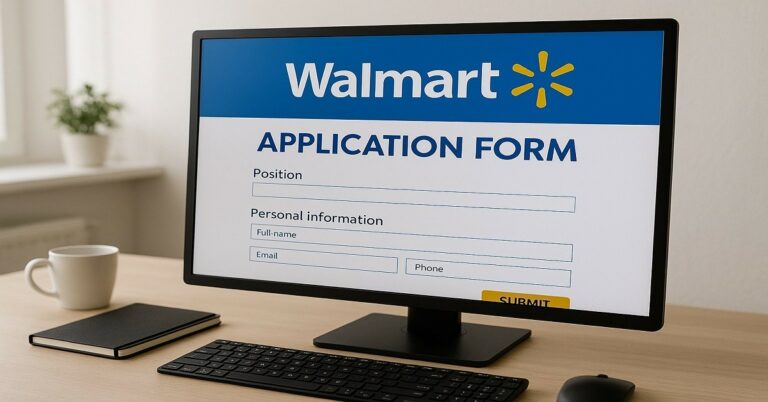Under growing hybrid models, Remote Support Roles at Apple let qualified candidates deliver customer care and technical help from a home office while contributing to Apple’s well-known service standards.
Apple groups these jobs under Support and Service teams, including Advisor roles and team leadership, and lists them alongside “Home Office” positions in its careers system for easy filtering.
Apple’s student-facing program also offers part-time, remote work that includes structured training.

What These Roles Involve
Customer-facing support remains the core. Advisors handle inbound chats, calls, and messages about devices, services, and subscriptions, using documented workflows and empathy to resolve issues efficiently.
Technical escalations route to specialists, while team managers coach quality, productivity, and soft skills.
Apple’s pages outline Support Advisor and Team Manager paths, benefits, and growth expectations, reinforcing a service culture anchored in privacy, accessibility, and clear communication.
Common Jobs Across the World
Across geographies, openings include full-time Advisor roles, part-time student positions, and occasional leadership vacancies, each posting specifying schedule expectations and eligibility.
Most corporate-aligned roles note English-language requirements in the listings, and many job cards explicitly flag “Home Office: Yes.” Filtering for “Home Office” on the careers portal surfaces current remote-eligible jobs across multiple functions.
Where to Find Legitimate Openings
Apple careers portal searches provide real-time vacancies and the most reliable descriptions, including required skills, location eligibility, and application steps.
External job boards can help with alerts, yet applications typically redirect to Apple’s system for compliance and status tracking. Bookmark a saved search and refresh frequently during high-volume recruiting windows.
Step-By-Step Application Process
Clear sequencing shortens timelines and reduces avoidable rework. Treat each posting as unique, tailor materials precisely, and keep a simple tracking sheet for deadlines and interviews.
A concise narrative that maps your experience to each requirement consistently performs better than generic claims. Expect standard online submission, possible assessments, and structured interviews.
- Filter for “Home Office” on the Apple careers portal, then shortlist roles that match skills and location eligibility.
- Tailor documents to each description, mirroring keywords and prioritizing measurable impact relevant to customer support.
- Complete the profile and submit via the job page; use the portal to monitor status and manage communications.
- Prepare for an Apple virtual assessment, which may screen typing accuracy, problem-solving, or scenario handling.
- Join video interviews ready with examples using the STAR method, a concise structure for behavioral answers.
Craft an ATS-friendly resume for Apple
Strong resumes foreground service outcomes, tool fluency, and speed-plus-quality metrics.
Lead with a targeted summary referencing Apple customer support contexts and platforms used in prior roles, then quantify impact, such as reduced average handle time or elevated customer satisfaction.
Keep formatting clean and machine-readable, prioritize plain headings, and align phrasing with the posting’s language to improve parsing and recruiter scanability.
Interview Preparation that Fits Apple’s Format
Behavioral prompts dominate early rounds, often exploring conflict resolution, de-escalation, learning agility, and cross-team collaboration.
Structure answers with clear:
- Situation,
- Task,
- Action,
- Result sequencing and
- end with what changed in your approach afterward.
Technical screens for certain queues may cover device setup steps, Apple ID basics, subscription troubleshooting, and accessibility features.
Environment checks also matter; test camera, mic, and lighting, and maintain a quiet background to mirror a professional support setting.
Home Office Setup Essentials
Stable broadband is fundamental for simultaneous voice, screen-sharing, and CRM activity.
A comfortable, ergonomic chair and desk combination reduces fatigue throughout long support blocks, while neutral lighting improves video clarity during coaching or calibration sessions. Certified headsets that isolate background noise help maintain customer focus and meet call-quality standards.
Student Advisors train and work from a home office and, per Apple’s program details, receive an iMac for the role; equipment for other roles follows the specifics listed in each posting.
Role Snapshots and Pathways
A focused comparison clarifies entry points and expectations. Review postings for exact schedules, pay ranges where disclosed, and regional requirements before applying.
| Role type | Typical focus | Schedule notes | Training | Equipment note |
| Apple At Home Advisor | Frontline customer support via chat and phone, documented troubleshooting | Variable, may include evenings/weekends depending on queue | Onboarding plus ongoing coaching | See each posting for specifics |
| Apple Support College Advisor | Part-time remote support for enrolled students | Part-time during term with structured shifts | Up to ~9 weeks paid training | iMac provided for training and work per program FAQ |
| Support Team Manager | Coaching, metrics, escalations, team operations | Full-time leadership schedule | Leadership development and tools | Per posting and location |
Program and equipment details derive from Apple’s published materials; always defer to the live job card for current terms.

Common Pitfalls to Avoid
Competitive pipelines amplify small errors, so eliminate frequent blockers. Maintain document accuracy, respect eligibility filters, and demonstrate a suitable workspace during interviews.
Short, unsubstantiated claims undermine credibility; precise metrics and concrete scenarios win attention.
- Submitting generic resumes that ignore the posting’s requirements and language.
- Skimming location or language eligibility on the job card and applying anyway.
- Treating the Apple virtual assessment casually instead of practicing device-agnostic troubleshooting flows.
- Appearing on video without a quiet, professional space that resembles a real support environment.
Timeline, Status Tracking, and Follow-Through
After profile creation, status updates and recruiter messages flow through the Apple careers portal, which centralizes submissions and helps coordinate interviews.
Keep a brief log of applied roles, dates, and recruiter names, and schedule practice blocks ahead of assessments.
For student candidates, confirm university eligibility windows and term alignment before applying to the Apple Support College Advisor track.
FAQs
Common questions about apple roles:
- Where are remote roles available? Availability depends on region and role; the careers portal indicates eligible locations and remote status on each posting.
- Is prior Mac experience mandatory? Student program materials emphasize training that covers Apple products, troubleshooting, and internal tools, reducing the need for deep prior expertise.
- Does Apple provide equipment? The Apple Support College Advisor FAQ specifies an iMac is provided for that program. Other roles list equipment expectations individually on their job pages.
- What language skills are commonly required? Many corporate-aligned roles list English requirements, and some postings ask for additional regional languages; always check the job card.
Last Thoughts
Start by running a saved Home Office search on the Apple careers portal and shortlisting roles that match location, schedule, and language criteria.
Convert achievements into metrics that reflect service quality and speed, such as first-contact resolution or post-interaction CSAT.
Prepare two STAR stories per competency, de-escalation, multitasking under volume, and collaboration, to cover most behavioral prompts, then rehearse in a quiet, well-lit space that mirrors the production environment.












